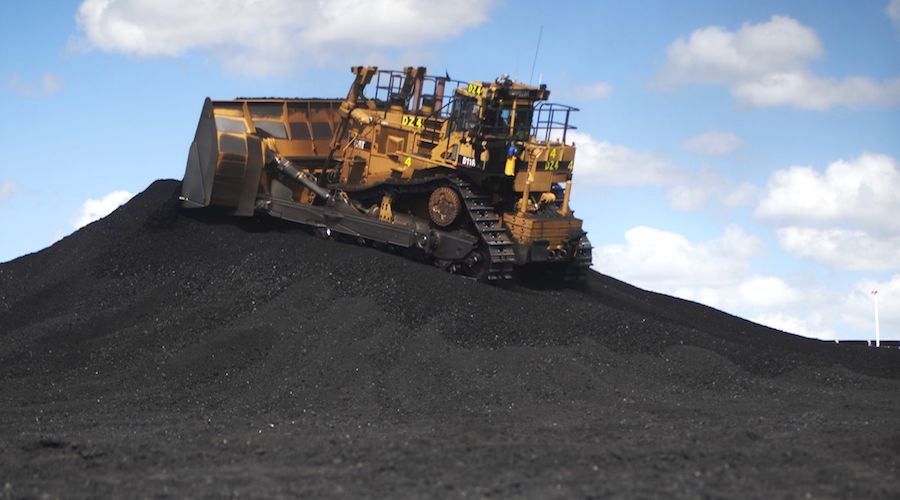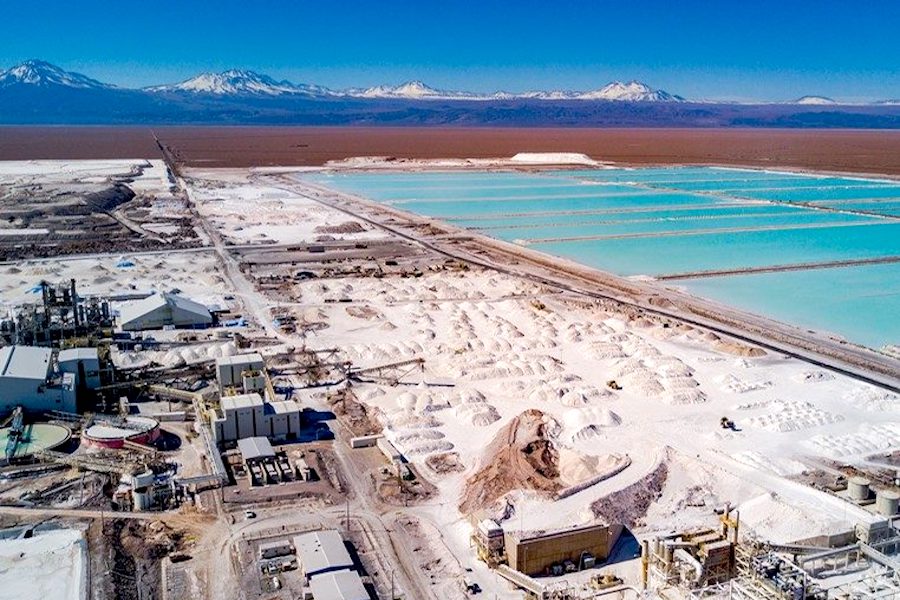
SQM’s evaporation pools in Chile’s Atacama Desert. (
Image courtesy of SQM.)
https://www.mining.com/web/lithium-king-crowned-in-dictatorship-sees-3-5bn-fortune-at-risk/
Few people are better positioned for the electric-vehicle revolution than the billionaire Julio Ponce Lerou.
He retired years ago, but the former son-in-law of late dictator
Augusto Pinochet is still known in Chile as the lithium king. And Ponce
has never been richer: The shareholder group he leads has seen its
approximately 25% stake in SQM, the world’s No. 2 lithium miner,
quintuple over the past seven years amid record profit, increasing the
value of the portion he owns to $3.5 billion.
Sign Up for the Latin America Digest
Like billionaires across the globe who have seen their wealth soar,
from Elon Musk to Chinese property moguls, Ponce, 76, has become a
target at home amid the boom times for lithium, a key mineral for making
electric vehicle batteries. One of his main adversaries may turn out to
be Chile’s 36-year-old president, Gabriel Boric, who supports a
constitutional rewrite that may impose environmental curbs on mining and
wants to create a national lithium company that could compete with SQM,
which sits on the planet’s richest deposit.
Boric’s brand of left-wing politics is much more investor friendly
than that of Salvador Allende, whose 1971 nationalization of US-owned
mines led to the creation of state copper giant Codelco. But there are
signs that the lithium business is about to get increasingly complicated
in Chile, with authorities recently rescinding new contracts amid calls
for the state to get a bigger share of the mineral windfall.
The shifting landscape for the lithium king has its roots in a wave
of street protests in 2019, which led to a rewrite of a constitution
born in the Pinochet era that enshrines private property, including
minerals and water. Writers of a new charter want to tip the balance
back toward community rights, environmental protection and state-run
social services, with a greater say for indigenous groups in where and
how natural resources including lithium are extracted.
Ultimately, the moves could force SQM to adopt extraction techniques
that push up costs or limit production, potentially marking an end to
booming profits. Ponce — Chile’s second-richest person — is the only
disclosed name from the shareholder group, whose entire stake is worth
more than $6 billion. Filings show his portion is equivalent to about
16% of SQM. The shares fell 3.2% in Santiago trading Thursday.
The movement is increasing scrutiny of SQM’s business model, which is
based on pumping up vast amounts of brine from beneath a salt flat in
northern Chile’s Atacama Desert and storing it in giant evaporation
ponds for a year or more — a footprint that can be seen from
space. The resulting concentrate is turned into lithium carbonate and
hydroxide at nearby plants and sent off to Chinese and Korean battery
makers.
As simple as it is profitable, the process uses far less fresh water,
chemicals and energy than hard-rock mining. But the solar evaporation
technique means billions of liters of brine are extracted and then
vaporized in one of the most arid places on Earth, which some say is a
threat to wildlife such as pink flamingos that inhabit its Mars-like
landscape.
Radical proposals such as nationalizing the entire industry have
fallen short in the constitutional process. But if the new charter opens
the way for the mineral-rich brine under the Atacama to be considered a
type of water — an idea the company disputes — that type of mass
extraction may come under threat.
There are already calls from some communities and politicians to move
to a more selective or direct process of mining that would mean far
less evaporation — and probably less output and profit. Both SQM and
Albemarle Corp., the only two lithium producers in Chile, are
investigating such techniques, which are relatively untested
commercially.
Across the developing world, the growth in EVs has created a new
demand for minerals from Atacama lithium to nickel in Russia’s Siberia
to cobalt in the Democratic Republic of Congo. Powering the world with
less fossil fuels presents a new set of social and environmental
challenges. In the short term, it’s made mineral moguls like Ponce
fabulously wealthy.
But the energy transition is leaving behind the communities where the
metals are extracted, says 70-year-old Sara Plaza, an indigenous
resident of Peine, a village near the Atacama operations.
“Mining dried out the salt flats,” she said from her modest home,
with a view to the chalky expanse and mountaintops that surround her
town. “Julio Ponce has done whatever he wanted.”
Ponce’s shareholder group didn’t respond to requests for comment made through SQM.
SQM says it is reducing its brine pumping rates even as it ramps up
production, through efficiencies and by focusing on lithium and less on
minerals used in fertilizers. The company is also spending a lot more
time and money trying to win indigenous groups’ favor, and points out
that its contribution to state coffers of about 60% of earnings is among
the biggest in the industry.
The company has a new marketing campaign that highlights its
contributions, and even plans to put up a sign at its Santiago
headquarters for the first time to boost local visibility. All this
comes as it prepares for talks to renew its mining lease with the
government that expires in 2030.
“We want to tell people what we do,” said Carlos Diaz, SQM’s head of
lithium. Namely, production of a critical mineral that “helps to
decarbonize the world.”
As for Ponce, his journey to lithium king took many twists and turns.
Ponce in 1969 married Veronica Pinochet Hiriart, whom he met because
their families had neighboring beach houses. Four years later, Pinochet
led the bombardment of Chile’s presidential palace in the coup that
brought him to power.
Ponce was working at a sawmill deep in the jungle of the Darien Gap
at the time and heard about the attack from a television in Panama.
Under Pinochet’s rule, his fortunes quickly began to change.
During the dictatorship, the former forestry student was named
president of a state cellulose company, and helped guide its
privatization. He rose to lead other companies controlled by the
government and, eventually, the development agency in charge of
converting state-run enterprises into private businesses, Corfo. The
agency had also commissioned early research on critical minerals in the
Atacama, including lithium.
Ponce stepped away from those roles in 1983 to fight allegations of
illegal enrichment in the acquisition of ranch lands, of which he was
acquitted. When Soquimich, as SQM is also known, sold shares in 1986, he
was back in the privatizations, but this time on the buy side. He and
his family members bought shares, and when Ponce became chairman in
1987, the board was still stacked with military officials. Years later,
Chile’s comptroller found that parts of Soquimich were privatized for as
little as a third of market value.
Maria Monckeberg, a Chilean author who is an expert on the fortunes
derived from Pinochet-era privatizations, said the reforms urged by
economic advisers who studied at the University of Chicago — known as
the Chicago boys — opened the way for Ponce’s wealth boom.
“Thanks to the roles he had in Corfo, he detected the importance of
Soquimich,” Monckeberg said of Ponce. “And he began designing the plan
to own it.”
Chile was only beginning to discover lithium’s potential in the
Pinochet era. A copper miner called Anaconda documented deposits when it
went on a search for water resources in the Atacama desert in the
1960s, according to Monckeberg’s book. In 1969, a research institute
tied to the development agency noted the location of the deposits could
make for relatively cheap extraction.
The lightest metal on the periodic table, lithium was discovered in
1817 by Swedish chemist Johan August Arfwedson, and was initially used
in tiny amounts to treat depression and bipolar disorder. It later
became the focus of military powers interested in the hydrogen bomb, and
eventually researchers found a variety of uses: waterproofing,
gunpowder, heat-resistant glass, air-conditioning and electric car
batteries.
“With bland consistency, white color and surprising properties,
lithium opens the doors to applications of great complexity and
sophistication,” said a 1986 book edited by Gustavo Lagos, a scientist
at Universidad de Chile. Lithium had “an almost magical meaning,
containing in it the hopes that neither copper nor even salt reached in
the life of the nation.”
Ponce became chairman of SQM in 1987 and continued building up his
stake. Six years later, after Chile had returned to democracy, it
obtained a lease for exclusive mineral exploitation rights on 81,920
hectares (202,428 acres) in the Atacama salt flats. The company invested
hundreds of millions at the site, initially with a focus on potash.
As SQM became one of Chile’s most profitable companies, Ponce fended
off a 2006 takeover attempt by PotashCorp. (now Nutrien), North
America’s largest potash producer, by signing a pact with Japanese
trading firm Kowa. In 2018, while no longer chairman but still a large
shareholder, Ponce got a deal to protect the firm’s trade secrets amid
an effort by a larger Chinese competitor, Tianqi Lithium Corp., to take a
stake. Ponce’s brother Eugenio remains an adviser to SQM.
He also endured scandals. He resigned from his decades-long reign as
chairman in 2015 amid a probe over illicit political campaign financing,
which led to a $30 million settlement with
the US Securities and Exchange Commission and a fine for SQM’s then-CEO
(Ponce himself was not charged). Ponce also fought allegations of
market manipulation in courts, and successfully reduced a record $70
million fine — an outcome that critics saw as the sign of a system that unfairly favors elites.
Today, Ponce makes time for visits to his polo club in Santiago, horseback rides at his estate of about 5,000 hectares and even equestrian jumping
during the pandemic. His children sometimes join him on rides — all
four were banned from SQM management in 2018, but not from SQM holding
companies, where his daughters are directors. A Panama-based trust holds
SQM shares for benefit of the family. Ponce keeps family close,
including his brother Gustavo, a yoga guru who has defended Julio on
Chilean TV.
“It’s not easy to be in his position,” Gustavo said of his brother in text reply to Bloomberg.
But a constitutional rewrite represents a challenge that could be harder for Ponce to resolve than his previous court battles.
Cristina Dorador, one of the members of Chile’s constitutional
convention, says the current charter fails to recognize the Atacama salt
flats as ecosystems that are affected when large volumes of brine are
pumped for lithium extraction. A scientist, she has published studies on
the dwindling flamingo presence at lagoons in the vicinity of lithium
mining.
SQM says those studies fail to consider the impact of
tourism on the migratory birds, adding that while lithium production is
up, brine pumping rates are down and food conditions haven’t
changed. Monitoring systems show flamingo populations have remained
stable over time, SQM said, adding that it welcomes scientific efforts
to better understand the relationships between mining and the
environment.
Dorador said the promise of addressing climate change by supplying
the materials needed for a shift to renewable energies has enriched
miners like SQM, but few EV consumers are aware of the new types of
environmental problems that the transition is creating.
“If we are going to do any exploitation then it needs to be done
using the latest in technology and ensure that the consequences are
minimal,” she said. “There has to be a national decision.”
Joe Lowry, founder of advisory Global Lithium LLC, said SQM needs to
address environmental concerns, but at these heights — with a lithium
shortage propping up prices near record highs — it’s not a “major
hurdle,” at least financially. Even a constitutional rewrite is unlikely
to upend forces that are working in Ponce’s favor, he said.
“The new government certainly will not want to stop the massive royalty income,” he said.
(By Blake Schmidt and James Attwood)
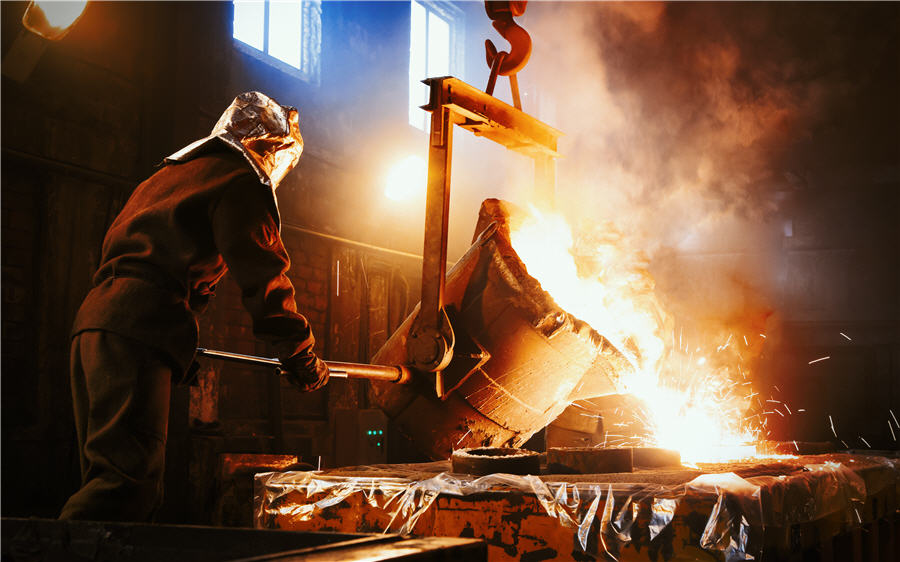
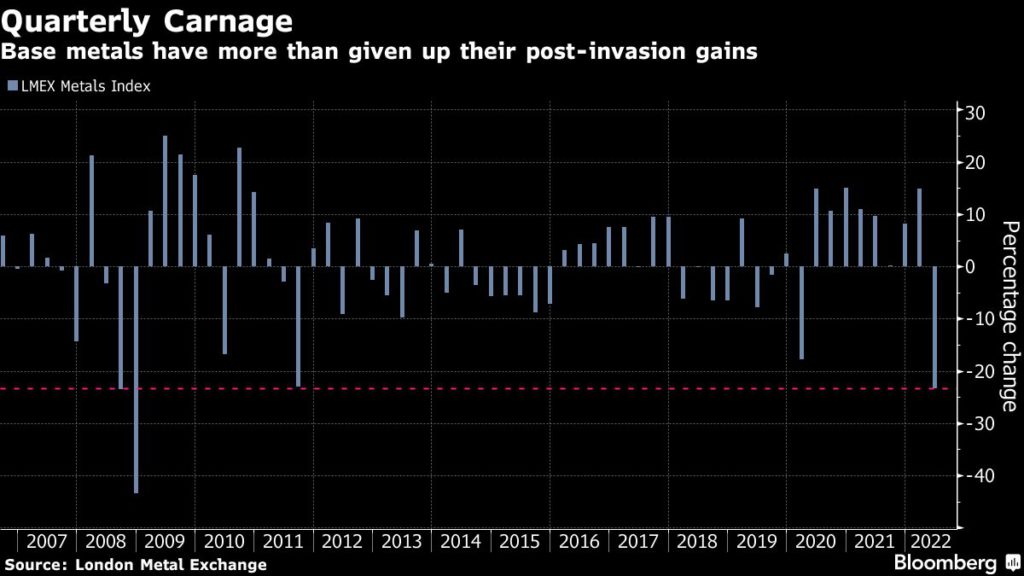
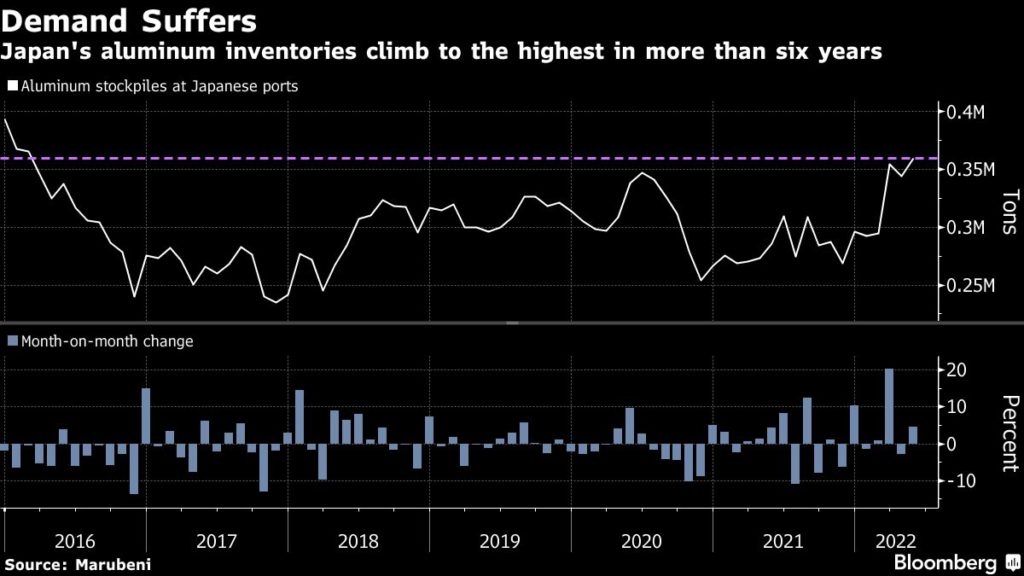



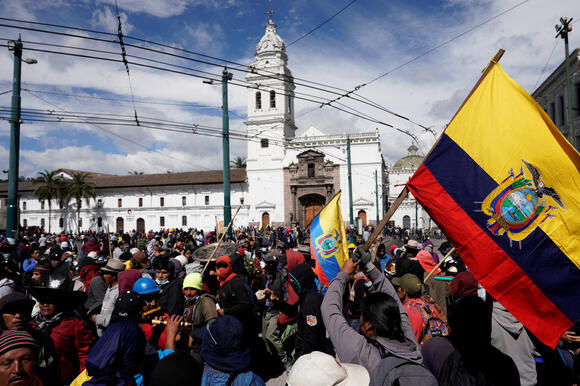

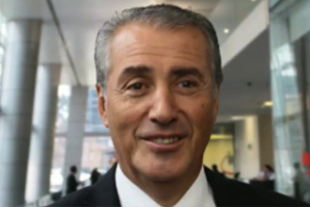




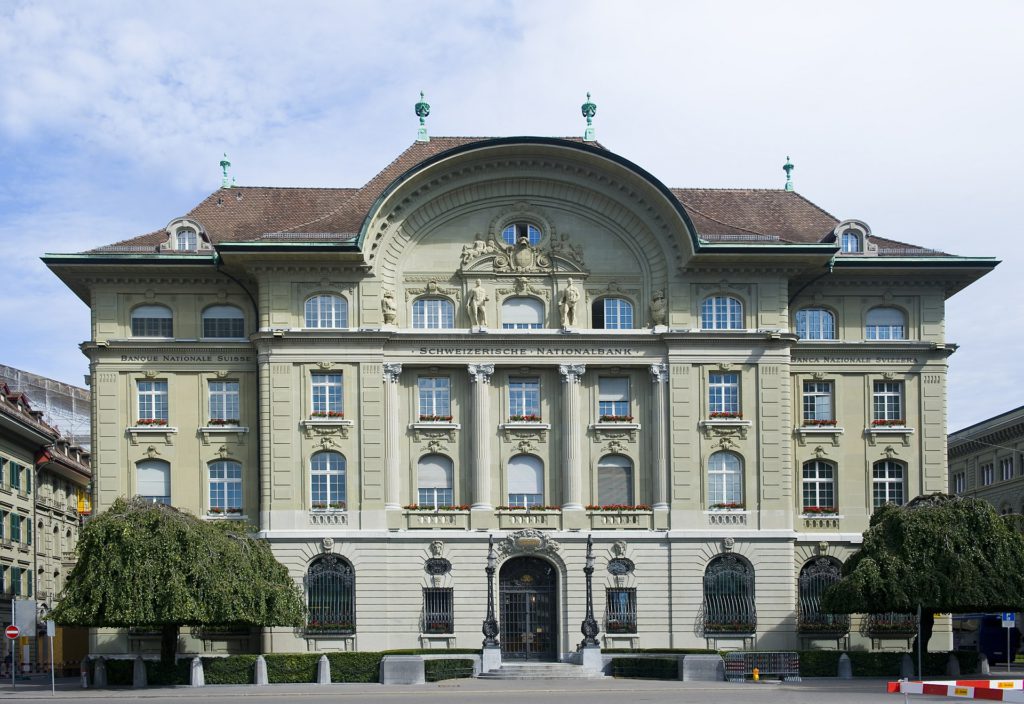
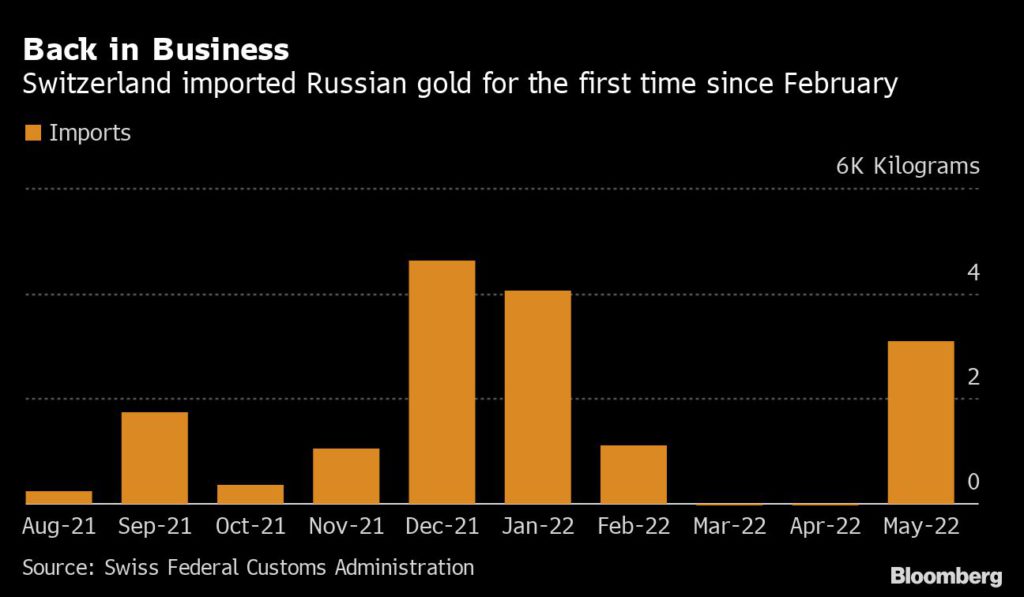
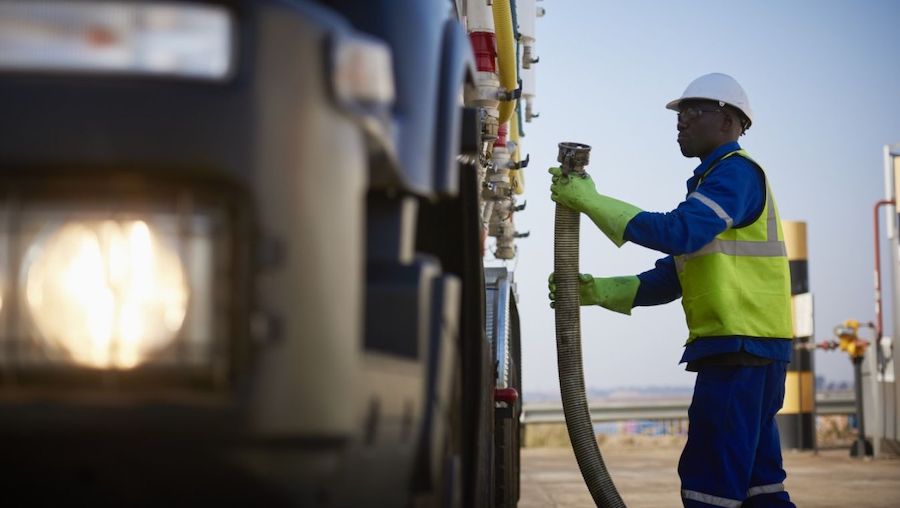
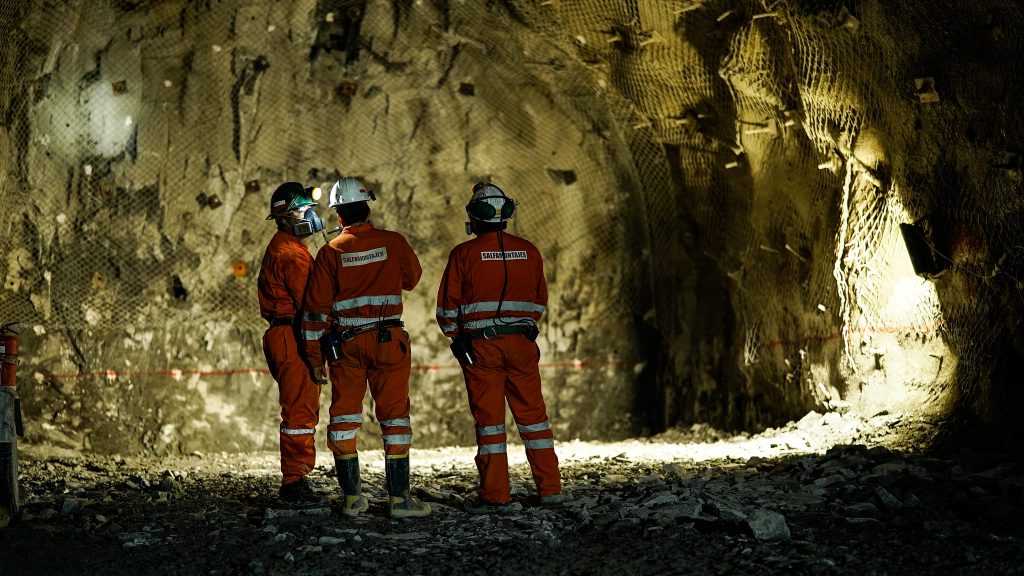
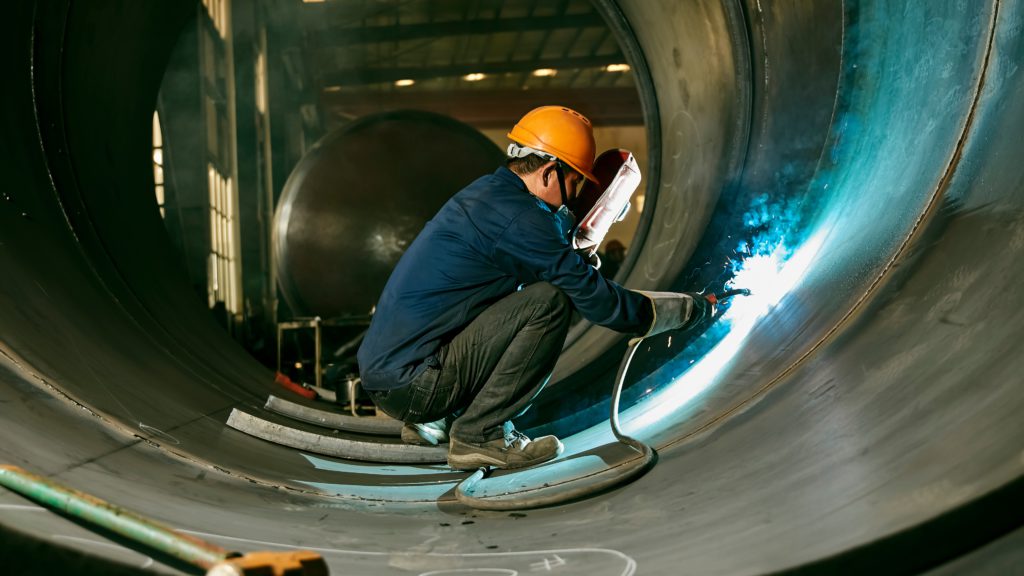

/fingfx.thomsonreuters.com/gfx/ce/jnvweowqjvw/China%20iron%20ore%20vs%20price%20June%2022.png_2.jpg)









